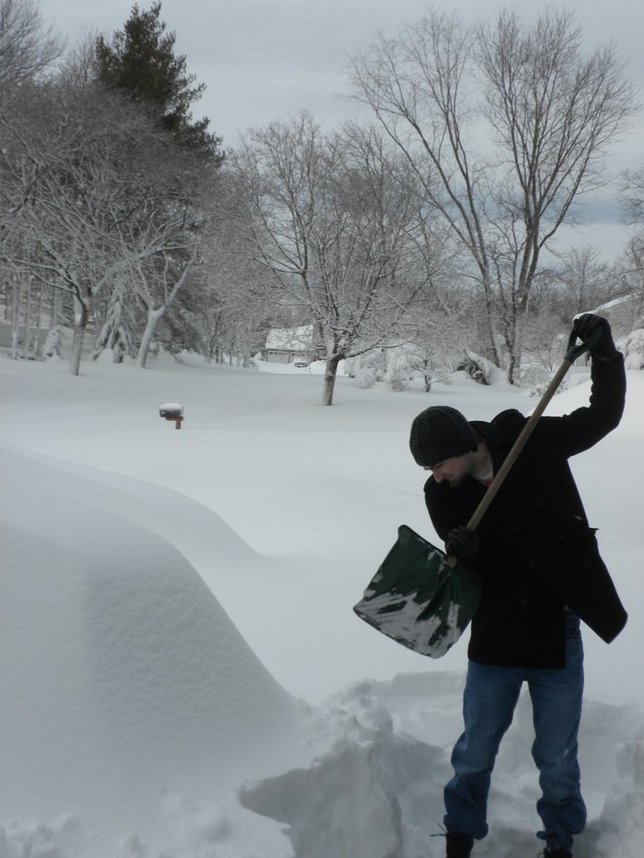As Long Islanders brace for a major winter storm with blizzard conditions—snow and strong winds combining to produce near zero visibility, deep drifts and life-threatening wind chill—many people are unprepared to face those extremely hazardous conditions.
According to The American Red Cross, an important part of being prepared is having a clear understanding of the various advisories and warnings that are reported:
- A Winter Storm Outlook means that storm conditions are possible in the next two to five days.
- A Winter Weather Advisory indicates that winter weather conditions are expected to cause significant inconveniences and may be hazardous; and if proper precautions are taken, conditions should not be life threatening.
- A Winter Storm Watch is an alert that storm conditions are possible within the next 36 to 48 hours. People should make preparations and stay informed about weather conditions.
- A Winter Storm Warning indicates life-threatening, severe conditions have begun or will begin within 24 hours. People should take immediate steps to insure safety.
The National Weather Service warns that each year scores of Americans die due to exposure to cold and suffer from other hazards related to extreme weather conditions. People can become trapped at home or in a car, without utilities or other assistance; and, as we are all too aware, the aftermath of a winter storm can have an impact on a community or region for days or weeks. Here’s a list of helpful precautions:
- Keep informed about weather conditions on Long Island or by listening to a weather radio or a local news channel. Keep a battery-powered radio on hand.
- Bring pets/companion animals inside during winter storms and be sure to have plenty of food and water on hand for them. The ASPCA has put together a disaster preparedness checklist that is a valuable resource for keeping your pets safe.
- Put together a disaster supply kit for your home.
- Allow a trickle of water to run in your pipes to keep them from freezing.
- Never use a generator, grill, camp stove or other gasoline, propane, natural gas or charcoal-burning devices inside a home, garage, basement, crawlspace or any partially enclosed area.
- Keep garage doors closed if there are water supply lines in the garage.
- Open kitchen and bathroom cabinet doors to allow warmer air to circulate around the plumbing and keep it from freezing.
- Keep your thermostat set to the same temperature night and day. While it may cost more for fuel, this precaution can prevent a much more expensive repair job should pipes freeze and burst.
- Find out where designated public shelters are located in your community should you and your family require emergency shelter.
- Avoid driving when conditions are hazardous. High wind gusts can cause whiteout conditions with visibility at or near zero.
- Carefully consider your physical condition before tackling strenuous cold-weather tasks.
- Consider how you may assist those with special needs—the elderly, the disabled, people living alone and children.
The NWS also warns that exposure to extreme weather conditions can cause frostbite or hypothermia, which can become life-threatening. Infants and the elderly are most susceptible. Frostbite is damage to body tissue caused by extreme cold. Symptoms include a loss of feeling and a white or pale appearance in extremities, such as fingers, toes, ear lobes or the tip of the nose. If immediate medical help is unavailable, the NWS recommends slowly rewarming affected areas; and if the person is also showing signs of hypothermia, warm the body core before the extremities.
Hypothermia is a life-threatening condition brought on when the body temperature drops below 95°F. Those who survive are likely to suffer with kidney, liver and pancreas problems. Symptoms include uncontrollable shivering, memory loss, disorientation, incoherence, slurred speech, drowsiness and apparent exhaustion. If medical care is unavailable, warm the person slowly, starting with the body core. Warming the arms and legs first drives cold blood toward the heart and can lead to heart failure. Warm broth should be the first food offered.
For More Information contact your local National Weather Service, American Red Cross chapter or the ASPCA.
Please include your comments and suggestions below or on our Long Island Living Discussion Forum.











